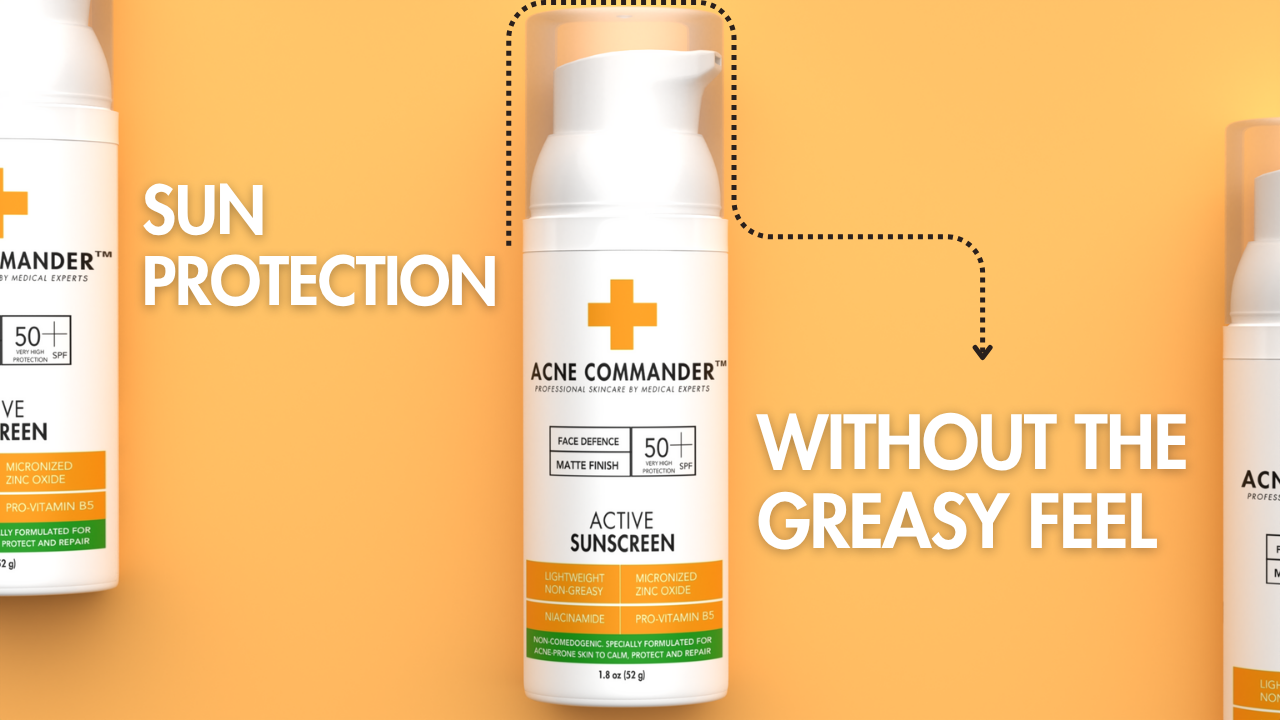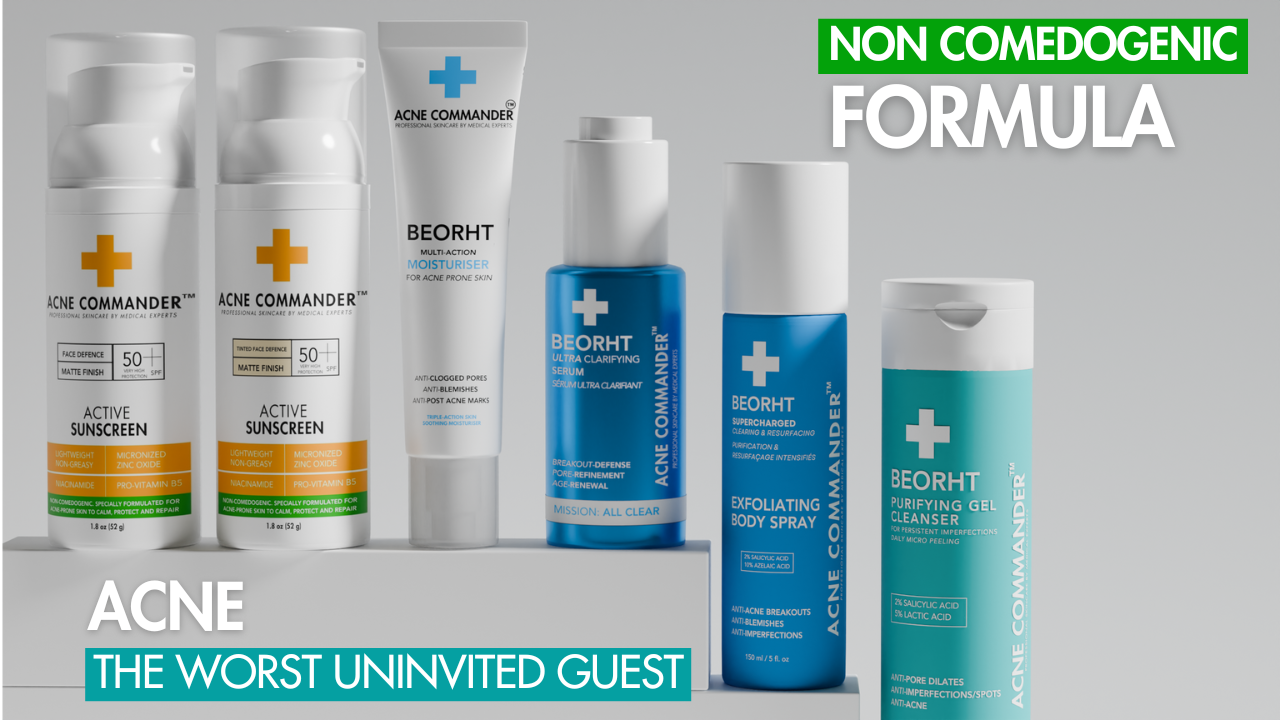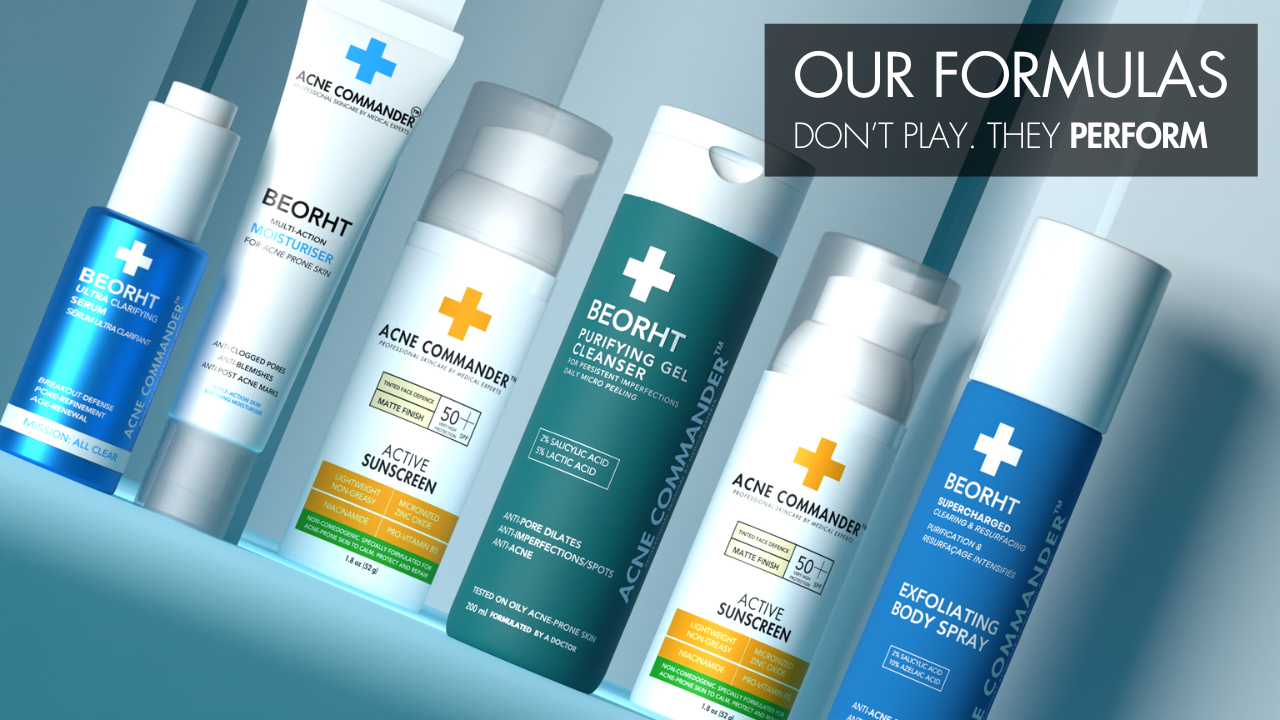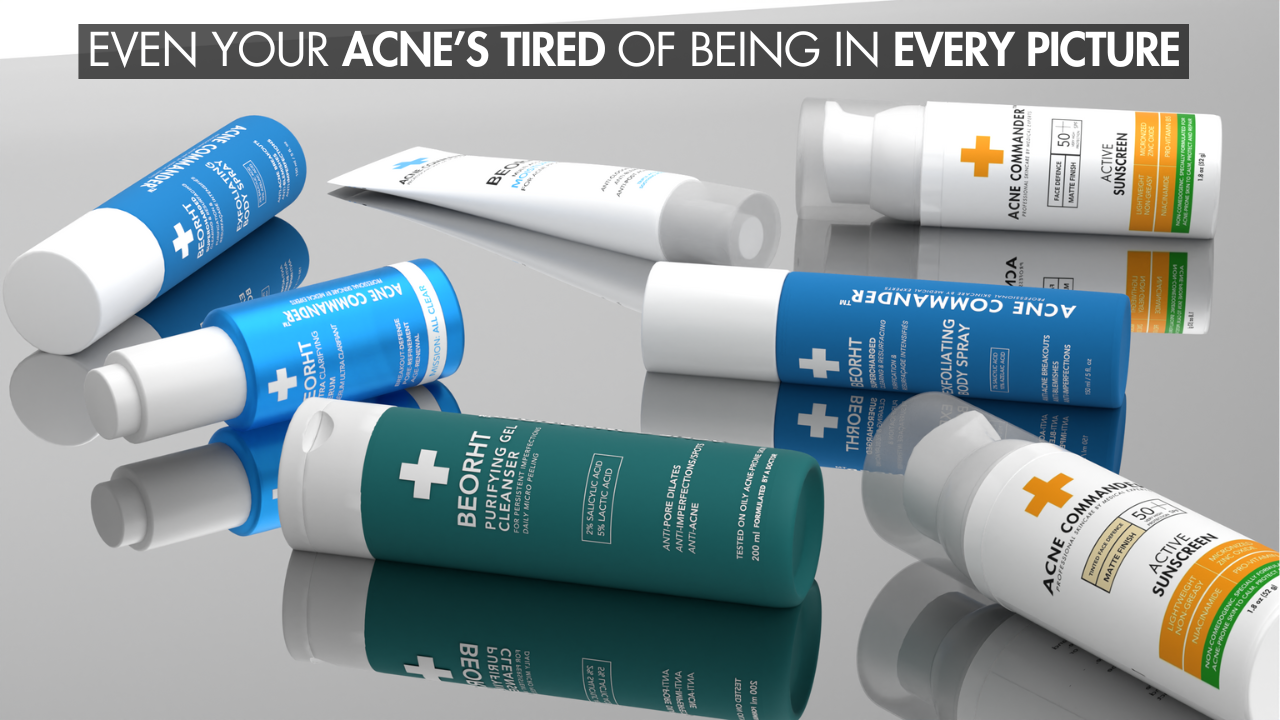Introduction: Rethinking Moisturizer for Acne-Prone Skin
Many people with acne instinctively avoid moisturizing creams, believing that hydration leads to more oiliness, clogged pores, and worse breakouts. The truth? That belief is not only outdated, it’s damaging to your skin.
In reality, moisturizing cream is not just good for acne, it’s essential for healing, prevention, and long-term skin balance.
In this article, we’ll debunk common myths, reveal what science and dermatologists say, and help you understand:
-
Why acne-prone skin needs moisturization
-
The risks of avoiding moisturizer
-
What kind of moisturizing cream works best
-
And how Acne Commander 3-in-1 Repairing Moisturiser transforms acne care through smart formulation
Section 1: Why People Avoid Moisturizing Cream with Acne
Many people avoid creams because of one or more of the following beliefs:
-
“My skin is oily, I don’t need more moisture.”
-
“Moisturizer clogs pores.”
-
“I’ll break out if I use cream on top of my acne treatments.”
-
“Only gels are safe for acne.”
These assumptions come from decades-old advice and misunderstanding the difference between oil and water in skincare.
Truth: Oily ≠ Hydrated
You can have oily skin that is severely dehydrated. In fact, when your skin lacks water, it produces even more oil to compensate, leading to breakouts, irritation, and a compromised barrier.
Section 2: The Science, Moisturizers and Acne
Moisturizing is not just a comfort, it’s a medical necessity when treating acne.
According to research published in the Journal of Clinical and Aesthetic Dermatology:
“Topical acne treatments often compromise the skin barrier, making moisturizing essential for tolerability and efficacy.”
This is especially true when using:
-
Salicylic acid
-
Benzoyl peroxide
-
Retinoids
-
Alpha hydroxy acids
These treatments dry and inflame the skin, which can lead to:
-
Flakiness
-
Sensitivity
-
Redness
-
Increased oil production
-
Secondary breakouts
Using a non-comedogenic moisturizing cream helps balance this out.
Section 3: What Happens When You Don’t Moisturize
When acne-prone skin is left dry or unmoisturized:
-
Sebum production increases, worsening oiliness
-
Skin becomes red, tight, and flaky
-
The protective skin barrier weakens
-
Post-acne marks heal slower
-
Active ingredients become more irritating
Over time, this leads to more breakouts, scarring, and inflammation, the opposite of what you want.
Section 4: Not All Moisturizing Creams Are Created Equal
If you’re experiencing breakouts after using moisturizer, it’s not because moisturizing is bad, it’s because you’re using the wrong kind of cream.
Avoid:
-
Heavily occlusive creams (petrolatum-based)
-
Fragrances or essential oils
-
Coconut oil, cocoa butter, or lanolin
-
Comedogenic ingredients that clog pores
Section 5: Best Moisturizer Ingredients for Acne-Prone Skin
The right moisturizing cream for acne should include:
|
Ingredient |
Benefit |
|
Salicylic Acid |
Penetrates pores and prevents breakouts |
|
Niacinamide |
Reduces inflammation and balances oil |
|
Zinc PCA |
Regulates sebum and kills bacteria |
|
Glycerin & Hyaluronic Acid |
Hydrate without heaviness |
|
Panthenol & Allantoin |
Soothe irritated skin |
|
2-Oleamido-1,3-Octadecanediol |
Repairs skin barrier |
These ingredients are all featured in the Acne Commander 3-in-1 Repairing Moisturiser, a next-gen cream that hydrates while actively clearing skin.
Section 6: Why Moisturizing Cream Works Better Than Gels for Some Acne
Gels may seem lighter, but they often lack barrier-repair ingredients that acne-prone skin desperately needs. Creams, when well-formulated, can:
-
Penetrate deeper layers of skin
-
Lock in hydration
-
Improve delivery of actives
-
Help repair micro-tears in the barrier caused by harsh acne products
Section 7: Acne Commander 3-in-1 Repairing Moisturiser – A Game-Changer
Unlike generic moisturizers, Acne Commander is specifically engineered for acne-prone skin.
Key Benefits:
-
2% Salicylic Acid – fights acne, blackheads, and clogged pores
-
Niacinamide + Zinc PCA – reduce shine, redness, and inflammation
-
Glycerin, Panthenol, Allantoin – soothe and hydrate skin deeply
-
Barrier-restoring technology with ceramide boosters
-
Non-comedogenic, fragrance-free, and oil-free
Whether your acne is hormonal, bacterial, or triggered by treatments, this cream provides hydration + treatment in one.
Section 8: Real People, Real Results
“I used to skip moisturizer thinking it made me greasy. But since I started using Acne Commander, my skin has calmed down and breakouts are less frequent.”
— Verified Review
“I layer it under sunscreen and makeup with no pilling. Feels rich but absorbs like a dream.”
— Reddit skincare thread
“I’ve tried gel moisturizers but they weren’t enough. This cream hydrates without suffocating my pores.”
— Instagram skincare community
Section 9: When to Moisturize for Best Results
Morning Routine:
-
Gentle Cleanser
-
Active serum (Vitamin C or niacinamide)
-
Acne Commander 3-in-1 Moisturiser
-
Oil-free sunscreen
Night Routine:
-
Cleanser
-
Acne treatment (e.g. retinoid or salicylic acid)
-
Moisturizer to prevent irritation and dehydration
Pro tip: Apply when skin is still slightly damp to seal in hydration.
Section 10: Moisturizing Cream Myths, Busted
|
Myth |
Reality |
|
Moisturizer causes acne |
Wrong moisturizer causes acne |
|
Oily skin doesn’t need cream |
Oily skin still gets dehydrated |
|
Only gels are safe |
Lightweight creams can be better |
|
Moisturizer makes skin greasy |
Not if it’s non-comedogenic |
|
You don’t need cream with acne |
You need it more than ever |
Final Verdict
Is moisturizing cream good for acne?
Yes, if you choose the right one.
Look for:
-
Non-comedogenic label
-
Fragrance-free
-
Lightweight, but creamy enough to repair skin
-
Active acne ingredients (like salicylic acid, niacinamide)
Avoid:
-
Thick occlusives
-
Essential oils or strong scents
-
Comedogenic oils





